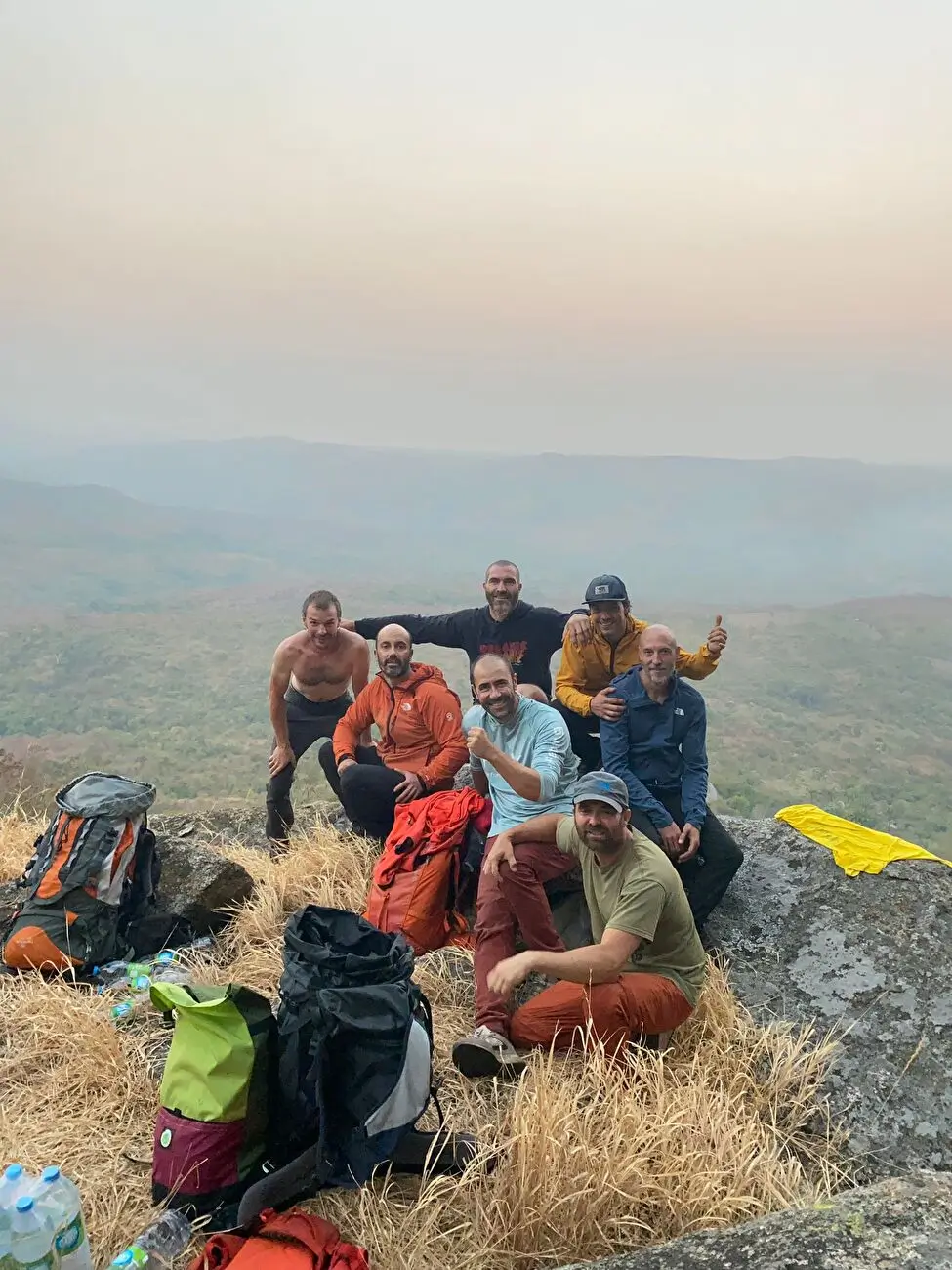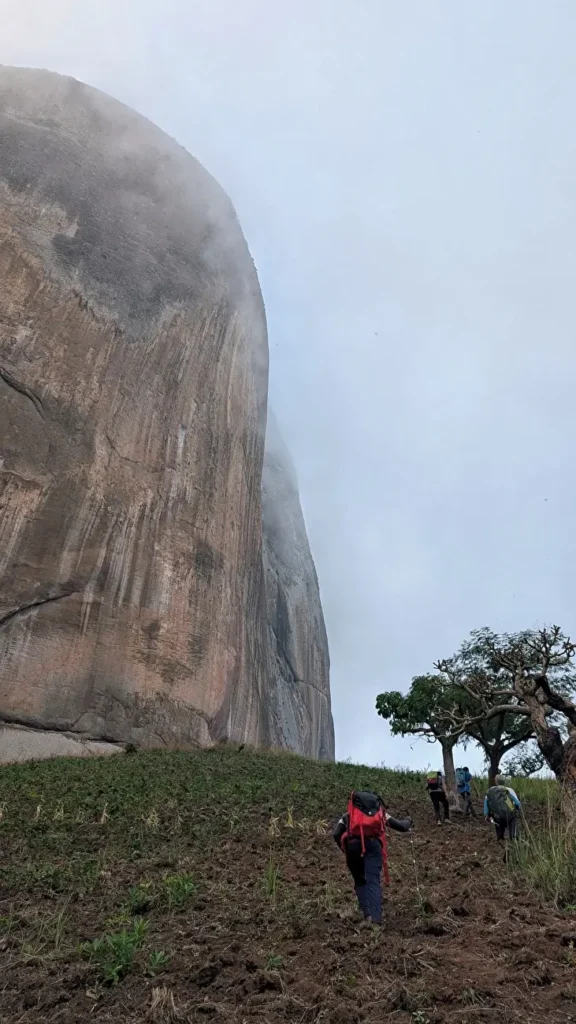Spanish Team Opens First Routes on Angola’s Granite Peaks

Angola, Cumbira Segundo, Miguel A. Díaz, Álvaro García, Indi Gutierrez, David Matos, Juanjo Medina, Manu Ponce, Gonzalo Torre, Photo: Manu Ponce archive
A team of seven Spanish climbers – Miguel A. Díaz, Álvaro García, Indi Gutierrez, David Matos, Juanjo Medina, Manu Ponce, and Gonzalo Torre – has completed a series of first ascents on the imposing granite peaks of southern Cumbira II in Angola’s Cuanza Sur province. The expedition, carried out in July during the dry season, highlighted the first ascents of Mount Kaikiawila and Mount Ngoku, two monolithic formations rising over 1,500 meters deep in the African jungle.
The climbers began with Kaikiawila, a 500-meter granite fang, selecting a line of wide cracks for their ascent. Over six intense days, including two nights spent on a small ledge 300 meters off the ground, the team overcame wide cracks, a chimney section, and a final 100-meter push to complete the first ascent of Terra da Ginguba (480m, 7b, A0). The route was named in honor of local farmers who supported the team throughout the climb.
While Kaikiawila was being established, part of the team opened a new line on Cunduville, the most climbed mountain in the area, creating John Frango (325m, 7a). The route traverses the central section of the wall and includes demanding pitches on its vertical final section.
The expedition then turned to Ngoku, the region’s largest formation, approached with respect for its sacred nature. Two teams worked on separate lines: one completed six slab pitches to the southern summit via Walale Po (285m, 6c+), while the other climbed the main summit through O Caminho das Sereias (~500m, IV), a straightforward yet exposed route.
Beyond first ascents, the team also contributed to the development of sport climbing in the region, opening two new sectors near Cawanji and Itumbu village, adding to a growing network of more than a dozen adventure routes. Bouldering opportunities were also expanded, offering future climbers numerous options in the area.
The expedition emphasized collaboration with local communities. The climbers engaged with village leaders, or “sobas,” and involved the children of Cumbira, sharing climbing experiences and educational support. Thanks to contributions from friends and family in Spain, they were able to provide school supplies for over 1,000 children and refurbish preschools in Itumbu and Cumbira villages.
The team encourages climbers worldwide to visit Angola, explore these new routes, and contribute to the continued development of this remarkable corner of the world.
Key First Ascents and Routes:
- Terra da Ginguba (480m, 7b, A0) – Kaikiawila, 12 pitches, Indi Gutierrez, Gonzalo Torre, David Matos, Manu Ponce
- Walale Po (285m, 6c+) -Ngoku south summit, 6 pitches, Miguel A. Díaz, Gonzalo Torre
- O Caminho das Sereias (~500m, IV) -Ngoku main summit, Indi Gutierrez, Manu Ponce
- John Frango (325m, 7a) – Cunduville, 9 pitches, David Matos, Juanjo Medina, Álvaro García
- 7 new sport climbs at Itumbu, grades IV–6c

